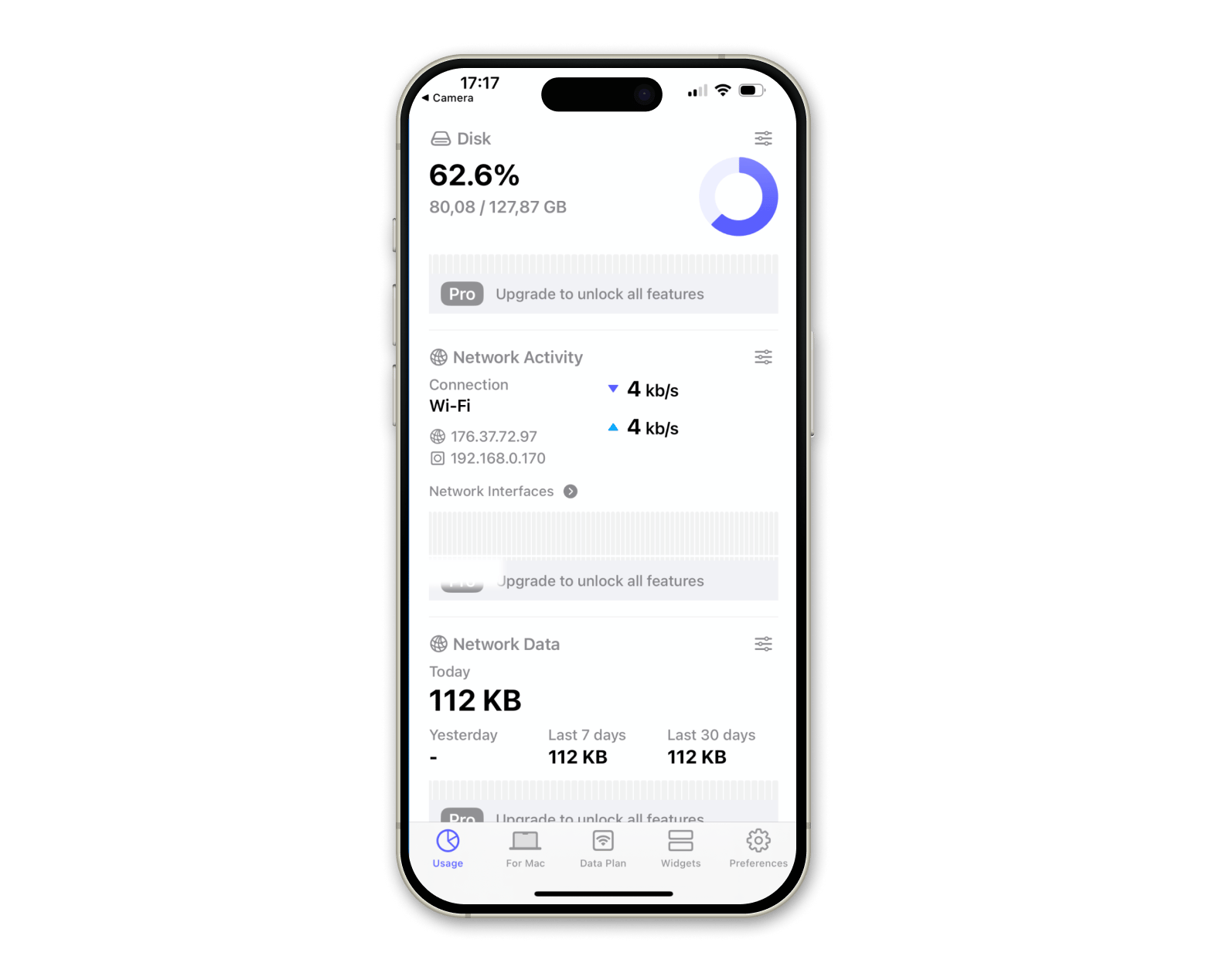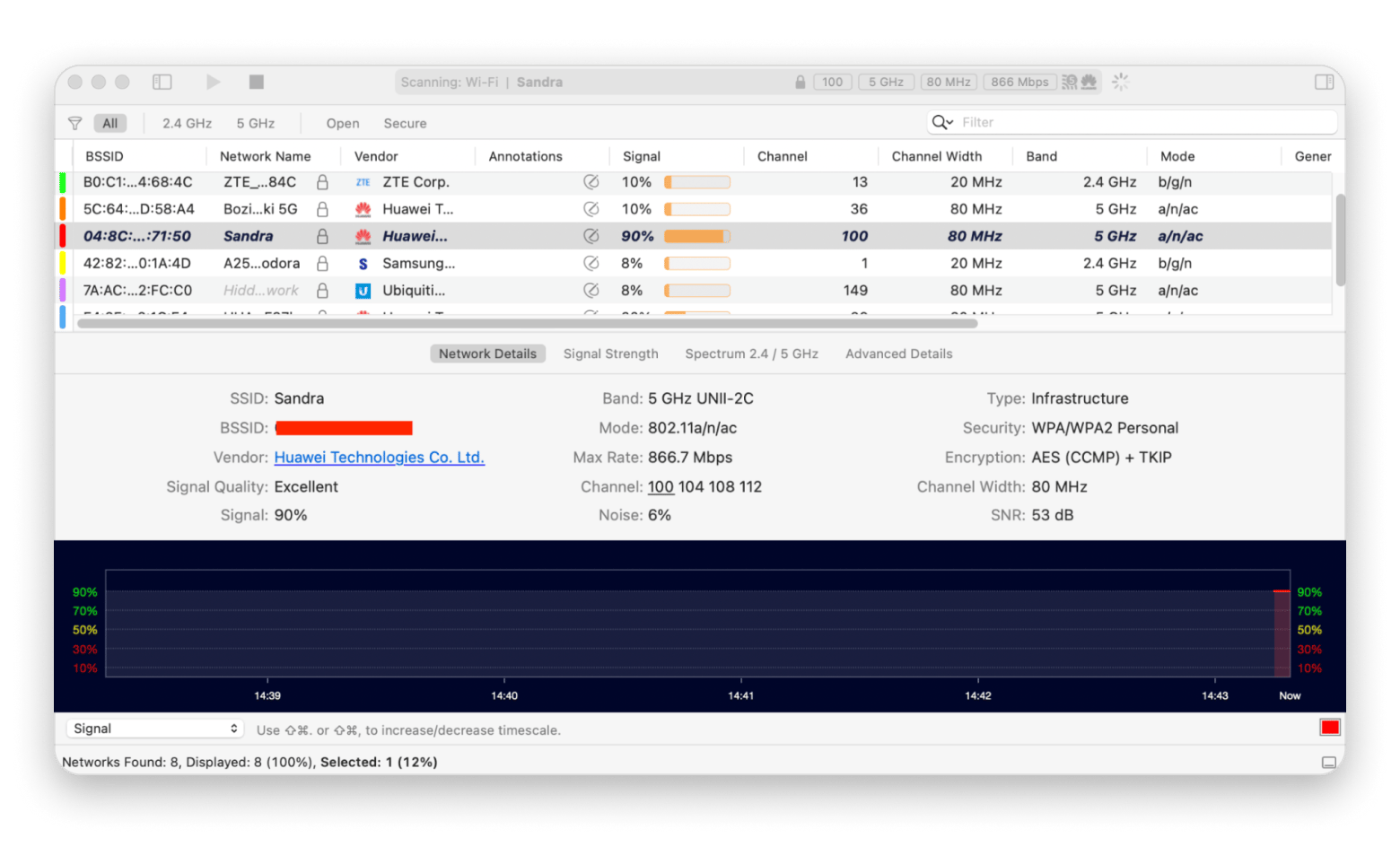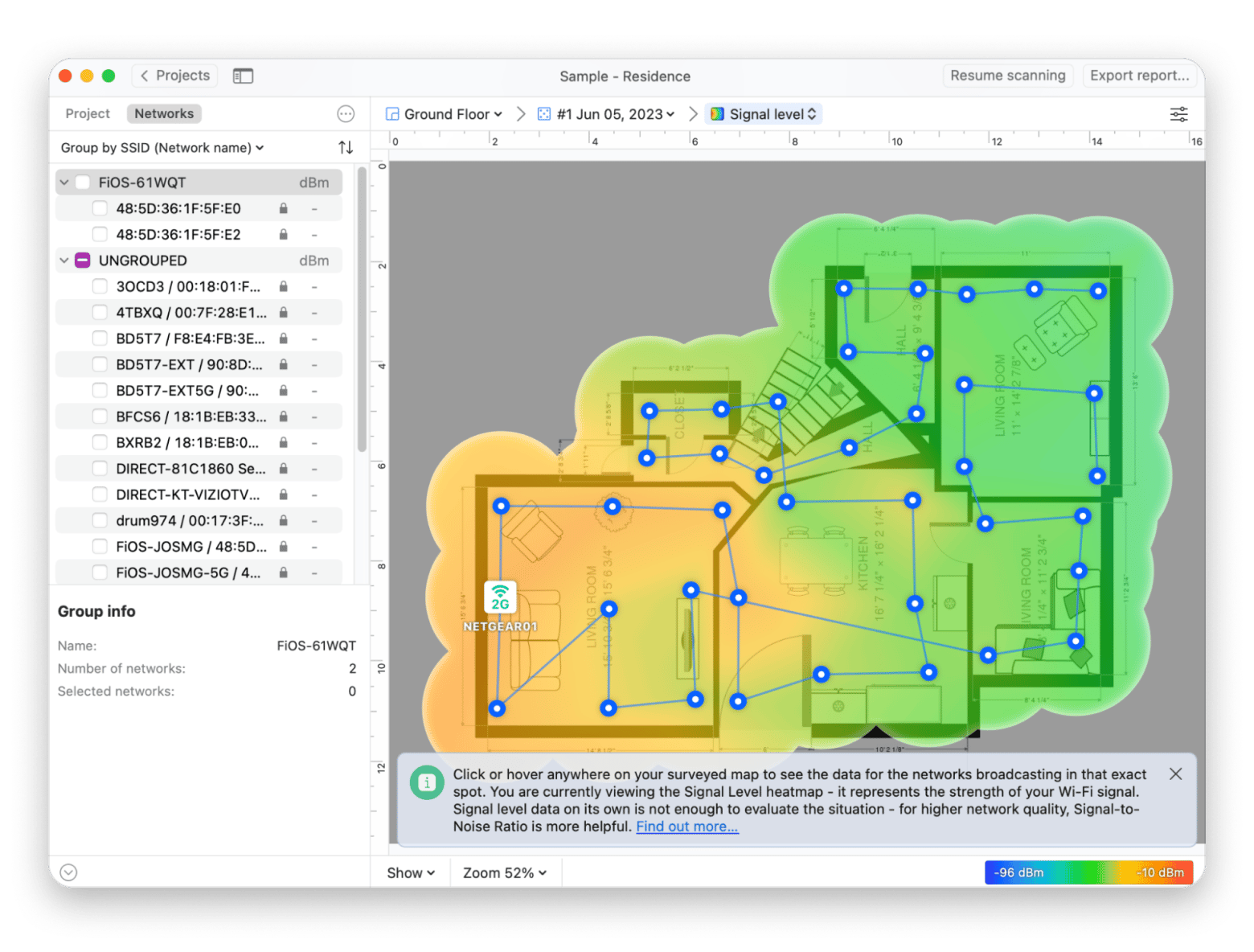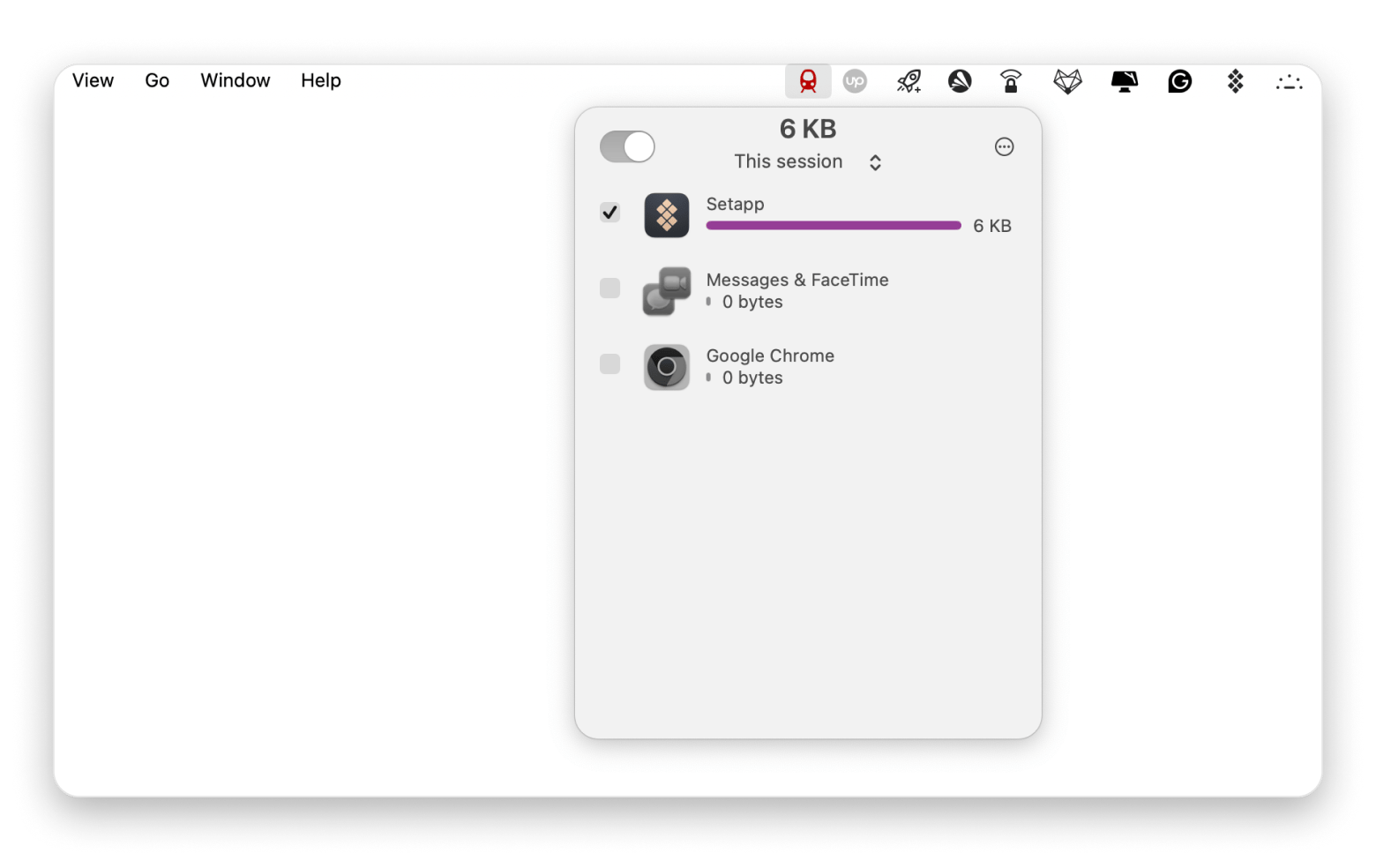How to check your internet speed: Top tricks & tools I use in 2025
Switched to a new ISP and want to make sure you’re getting the speeds you signed up for? Or maybe your connection’s been acting up and you’re wondering if slow Internet is to blame? A quick speed test will tell you exactly what's going on.
In this post, I’ll show you how to check your internet speed the easy way, on both Mac and iPhone.
But first, here’s a quick guide to the best ways to check your internet speed and manage your connection across devices:
Want to… | Here’s how… |
Test internet speed on iPhone or iPad | Open Safari and go to speedtest.net, or use a speed-test app for quick results. |
See real-time speeds on iOS | Try Usage to monitor live download and upload rates. |
Get a quick test with simple tips | Try CleanMy®Phone — it runs a 20-second speed test and tells you what your connection is good for. |
Check your speed on a Mac | Visit speedtest.net or speed.cloudflare.com in your browser, disable VPN, and click Go. |
Analyze Wi-Fi quality and interference | Use WiFi Explorer to scan all nearby networks and check signal strength, channel use, and overlap. |
Map your Wi-Fi coverage at home | Install NetSpot, upload a floor plan, walk around with your Mac, and get a heatmap showing strong and weak Wi-Fi spots. |
Save data when using a hotspot | Turn on TripMode to block background traffic and control which apps can access the internet on a mobile connection. |
How to check your internet speed on iPhone and iPad
Now that you’ve seen why testing your internet speed matters, let’s dive into how to do it on your iPhone or iPad.
First up, you need to prep your device by limiting internet activity. That means closing streaming apps like Netflix or YouTube, disconnecting other devices from the network, and turning off your VPN if you’re using one.
Once this is done, you’re ready to run the test, and for that, you’ll need the right app.
Let’s look at a few of the best options for checking your internet speed on iOS and iPadOS.
Best apps to check internet speed on iOS
Not all speed test apps are built the same. Some give you just the basics, while others dig deeper into your network performance. Here are a few standout picks for iPhone and iPad.
Usage: Easy data interpretation
If you just want to check your network speed without getting lost in too much technical detail, Usage might be the right pick.
It monitors your device’s performance, including network quality. You’ll see how fast your downloads and uploads are, along with some basic network data. As a bonus, you can customize how often the speed updates, every 1, 3, or 10 seconds, right from the settings.

WiFi Analyzer: Tons of tech information
WiFi Analyzer is a comprehensive tool for monitoring your network's status and identifying its problems. The free version provides basic features such as key network performance information and a speed test. The paid version offers advanced ping, data leak check, and more.
CleanMy®Phone: Speed test & interpretation
Curious what your network can actually handle? CleanMy®Phone runs a quick 20-second Speed test in the Health tab and gives you clear answers, like download and upload speeds, ping, and what the connection is good for, like gaming, browsing, or streaming movies.

Read also:
- IP Scanner alternative Mac
- Fix Wi-Fi not configured on Mac
- How to add a printer to a Mac
- Forget A Wi-Fi network on Mac
How to check your internet speed on a Mac
To test your Internet speed on a Mac, first pause all uploads/downloads on your device and ask others to do the same. Turn off your VPN, since it can affect results, or you can test with it on and off to compare.
Then, visit speedtest.net and click Go. This test shows ping, download, and upload speeds.
For more detailed metrics like jitter, use the Speedtest app by Ookla from the Mac App Store. Alternatively, try Cloudflare’s test at speed.cloudflare.com, which measures download, upload, latency, and jitter.
How to check your Wi-Fi speed on Mac
To check Wi-Fi speed, hold Option and click the Wi-Fi icon in the menu bar to see basic details like Tx Rate, which indicates your wireless transmit speed and signal strength.
If you want to get a detailed overview of your Wi-Fi, use an app like WiFi Explorer. It’ll list every network it sees and break down things like signal bars, range, encryption, and channel usage.

For a home- or office-wide signal map, NetSpot’s an awesome app. Just upload your floor plan, walk around with your Mac, and it’ll paint a green-to-red heatmap showing where your Wi-Fi is at its best (and where it falls flat).

How to make your internet speed faster
If you want to increase your Internet speed, there are a few things you can try:
- Have a strong password to prevent unauthorized use
- Scan for and remove malware
- Review the background process, like app auto-updates
- Remove any obstructions around your router
- Turn your router on and off to reset it
- Switch from Wi-Fi to using an Ethernet cable
- Clean out cache and cookies
- Use an ad blocker to help sites load faster
These are just a few tricks to speed up downloads and uploads on your Mac. If you’re stuck on a mobile hotspot, give TripMode a try. It lives in your menu bar, so you can flip it on or off in seconds. You can even set a schedule and block background syncs or backups whenever you need to.

macOS features that help manage internet speed
You can find a good deal of features for managing and optimizing your internet speed on your Mac.
If you want fewer interruptions, turn on Do Not Disturb (or Focus in newer macOS) to silence notifications. Click the Control Center icon (pill icon) in the menu bar, choose Focus, then click Do Not Disturb. You can also open System Settings > Focus > Do Not Disturb and turn it on.

To cut down on background data transfers, use Low Data Mode: Open System Settings > Wi-Fi, click Details next to your network, and turn on Low data mode.
For even finer control, open the Activity Monitor (Spotlight > Activity Monitor) and switch to the Network tab to spot any apps consuming too much bandwidth.

You can also turn on Content Caching via System Settings > General > Sharing and turn on Content Caching to store updates and app downloads locally.
What is a good internet speed?
A good speed is around 25 Mbps per person for everyday tasks like browsing, HD streaming, and video calls. For larger households with multiple users, smart devices, 4K streaming, or gaming, speeds between 500 Mbps and 1,000 Mbps may be needed.
Internet speed parameters
Understanding your internet connection means looking beyond download speed to include upload speed and latency. Latency and jitter, in particular, can greatly impact the quality of your video calls.
Download speed
Download speed is how much data your connection can receive per second, usually measured in Mbps (megabits per second). A top-speed Internet today is around 1 Gbps, while most homes get dozens or hundreds of Mbps. Office connections often exceed several Gbps to support many users.
Upload speed
Upload speed is how fast your computer sends data to the Internet, also measured in Mbps. Many connections have lower upload speeds than download speeds because most users download more data. However, businesses, gamers, and heavy upload users (like video callers) often need symmetrical speeds. To check, run an Internet speed test on your Mac to see if upload and download speeds match.
Latency time
Latency is the time it takes for data to travel from your computer to a server and back, crucial for smooth calls, gaming, and livestreams. Good ping times range from 40 to 60 ms, with under 20 ms being excellent. Jitter measures how much latency varies; over 20 ms can disrupt video calls, so lower is better.
Final thoughts on how to check your internet speed
Running a quick speed test is the best way to confirm you’re getting the download and upload rates you signed up for. Just pause any big transfers, go to a site like Speedtest.net or Cloudflare’s test, and check your ping, download, upload, and jitter numbers.
If you want more detail, Usage gives you real-time download/upload readouts without tech overload, and CleanMy®Phone runs a fast 20-second test with clear recommendations. For wireless troubleshooting, WiFi Explorer breaks down channels and signal quality, NetSpot maps your coverage room by room, and TripMode blocks background syncs when you’re on a hotspot.
All of these apps, and over 260 more productivity and utility tools, are available on Setapp, a single subscription service for macOS and iOS. Give it a try for free for seven days and see how much smoother your workflow (and Wi-Fi) can be.
FAQ
How do I check my Mac internet speed?
Third-party apps like WiFi Explorer are the best way to check your Mac's internet speed. You’ll see information on your internet speed and its range, signal quality, and security status.
How do I check my internet signal strength on my Mac?
To check your Internet signal strength on a Mac, hold the Option key and then click on the Wi-Fi icon. You’ll see a bunch of extra information pop up, including the RSSI (received signal strength indicator). The closer the number is to 0, the stronger the signal. -30 is top-tier, -60 is solid, and -80 or lower may mean the connection is weak. Tools like WiFi Explorer or NetSpot can provide more details about your signal strength, including how to optimize it.
How do I check my internet browsing speed?
“Browsing speed” isn’t typically a set metric you can track, but you can check out your connection stability and download speed to get a general idea. The higher your download speeds, the faster your browsing usually is.
How do I check my Internet Ping on Mac?
You can check your internet ping in two ways: by visiting a speed test site or downloading a third-party app like WiFi Explorer, or using Terminal. Open up Terminal and type in ping google.com, and your Mac will perform a ping test. Stop the test after a while by pressing Control + C. A lower pin under 50 ms is perfect for heavier activity, while a number over 100 ms can indicate room for improvement.






